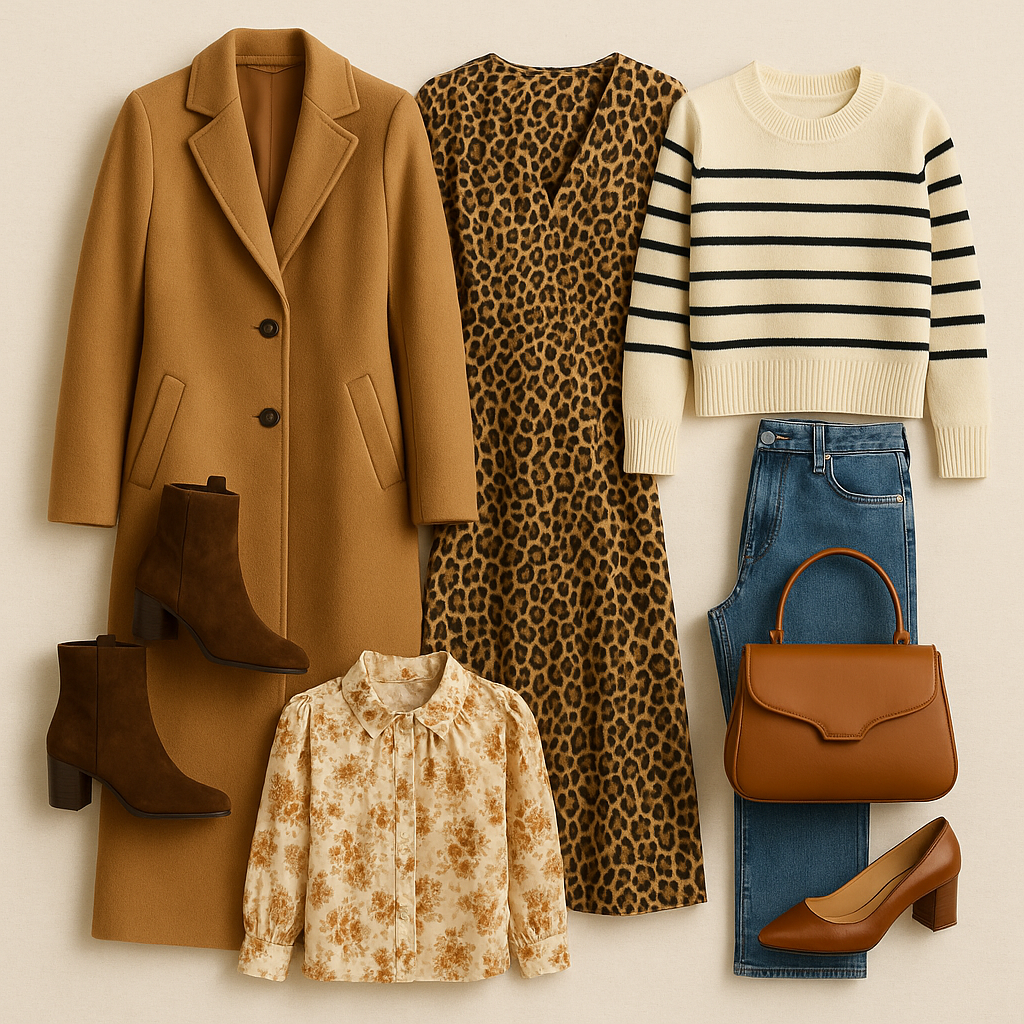Wardrobe Investments: How to Choose Pieces That Last
Every season brings a push to buy more — new trends, new colors, new “must-haves.” Today, with personalized feeds, reels, and constant targeted ads, that pressure is even stronger.
But the most valuable wardrobes aren’t built through constant replacement. They’re built piece by piece, thoughtfully curated with a focus on your lifestyle, your climate, and pieces that hold up over time. A great wardrobe is one you keep reaching for year after year because it works for you.
Here’s a process you can use to evaluate what you already own, fill in the gaps, and choose wardrobe investments that last.
1. Start With Climate and Lifestyle
Before you shop, step back and think about what you actually need:
Climate: Do you need a heavy 100% wool coat or a durable puffer for months of cold, or will a cashmere cardigan and dark denim be enough for a mild winter?
Lifestyle: Are you dressing for an office, working from home, traveling often, or preparing for upcoming events?
These questions help you focus on what you’ll actually wear on repeat — not what will sit in your closet unworn.
2. Do a Closet Audit
Pull out your fall and winter clothes and take a close look:
Keep: Pieces that still fit, feel good, and work with multiple outfits.
Repair: Tailor, clean, or re-sole what you love and want to keep wearing.
Let Go: Anything you skipped every time or that no longer fits your life.
Ask yourself why you wore some pieces constantly and ignored others. This helps you see the gaps — the missing coat, the pair of jeans that didn’t fit, the sweater you wished you had. That list becomes your priority for investing.
3. Choose 1–2 Key Investments
Start small and focus on the pieces that will make getting dressed easier right now:
Wool Coat: Look for 100% wool or wool/cashmere, fully lined, with no polyester blends. Choosing natural fibers means better drape, breathability, and longevity.
Denim: Aim for 100% cotton (or 99% with minimal stretch). Many brands now use lower-impact cotton and water-saving dye techniques — look for companies participating in programs like the Better Cotton Initiative or publishing sustainability reports.
Boots: Choose stitched (not glued) soles and quality leather that can be polished and re-soled. This allows you to repair instead of replace them season after season.
Knitwear: Select 100% cashmere or merino that’s tightly spun. Avoid acrylic blends, which pill quickly and don’t breathe. Some brands now share sourcing information or use certified fibers, reflecting a growing focus on transparency and sustainability.
Pants: Natural fibers with a clean drape. Have them hemmed to the shoes you wear most for maximum use.
Bag: Real leather with reinforced straps and a lined interior — a piece that can be conditioned and last for years.
Dress: One versatile style that can go from day to evening and across seasons — boots now, sandals later.
You don’t need to buy every category at once. Choose the one or two investments that will have the biggest impact on your wardrobe this year.
The brands I’ve linked in each category emphasize quality and are making strides toward more responsible production — though no brand is completely sustainable. Use these links as inspiration or a jumping-off point. You can also source similar pieces secondhand through ThredUp, Poshmark, The RealReal, or Vestiaire Collective, or by visiting local consignment shops and small boutiques to find items that fit your style and values.
4. Learn to Spot Quality
When shopping, check for these signs of quality:
Fabric: Dense, smooth wool that drapes well; sturdy cotton in denim and trousers; 100% natural fibers in sweaters.
Construction: Flat seams, strong stitching, smooth linings, and hems that hang straight.
Shoes & Bags: Stitched soles (not glued), solid heel construction, leather that feels substantial and can be conditioned.
Fit & Finish: Buttons securely attached, seams finished neatly, zippers that move smoothly, pockets that lie flat.
Pieces with these details will hold their shape, wear well, and be easier to repair when needed.
5. Think Cost-Per-Wear
Cost-per-wear is a simple way to see value beyond the price tag:
Example:
$500 coat worn 50 times = $10 per wear
$150 coat worn twice = $75 per wear
This perspective helps you justify spending more on the pieces you’ll actually wear — and skip the ones that won’t see enough use.
6. Care for What You Own
An investment only pays off if you keep it in rotation for years:
Clean coats before storing and hang on wide hangers in breathable bags.
De-pill and clean cashmere, then fold with cedar or lavender sachets.
Polish and re-sole boots before damage goes too far.
Stuff bags so they hold their shape and store away from direct light.
Small habits like these keep your clothes looking their best and extend their lifespan.
The Takeaway
Wardrobe investments aren’t about buying more — they’re about buying better.
Each purchase is a choice: choose pieces that fit your life, are made to last, and stay in use for years. Focusing on longevity, repair, and thoughtful buying is one of the most meaningful ways to reduce waste — and build a wardrobe that actually works for you.
✨ Flight 2 Fashion takeaway: A lasting wardrobe is built piece by piece — with investments that fit your lifestyle, hold their quality, and stay in use for years.
✨ Want to evaluate your own closet? Download the Wardrobe Investment Template in the Style & Wardrobe section of the [Resources Library] to audit what you own and identify the pieces worth adding next.
✨ Looking for seasonal direction? Explore the [Fall 2025 Inspiration Gallery] for outfit collections and palettes that show how investment pieces can work across occasions and seasons.








